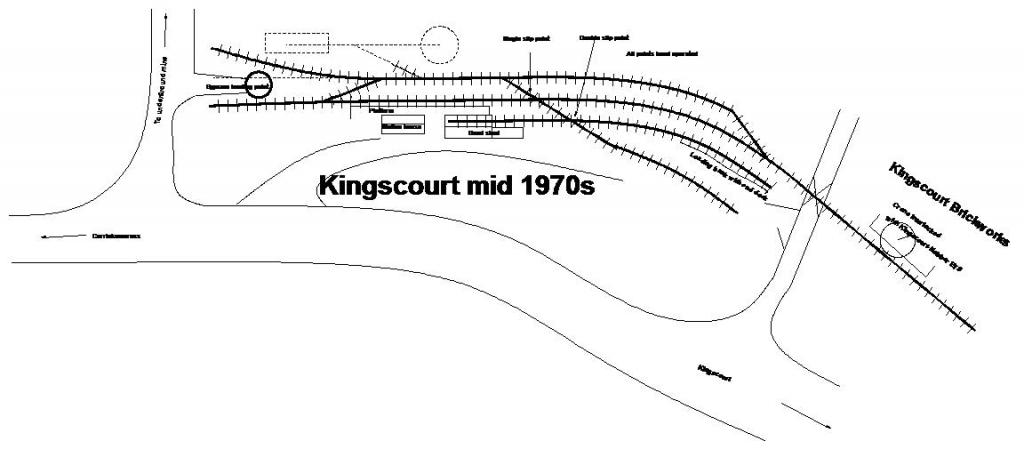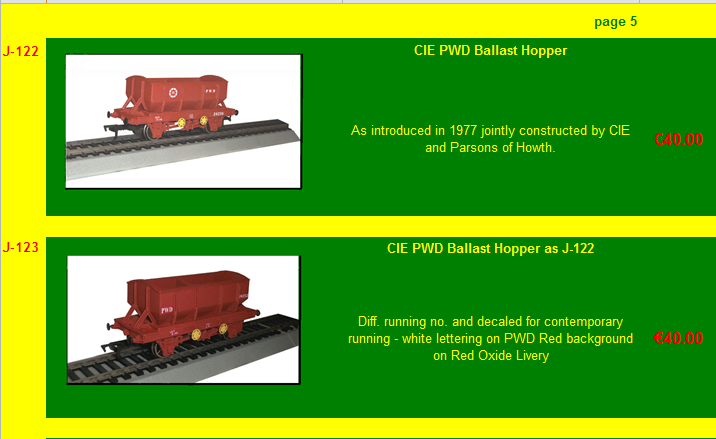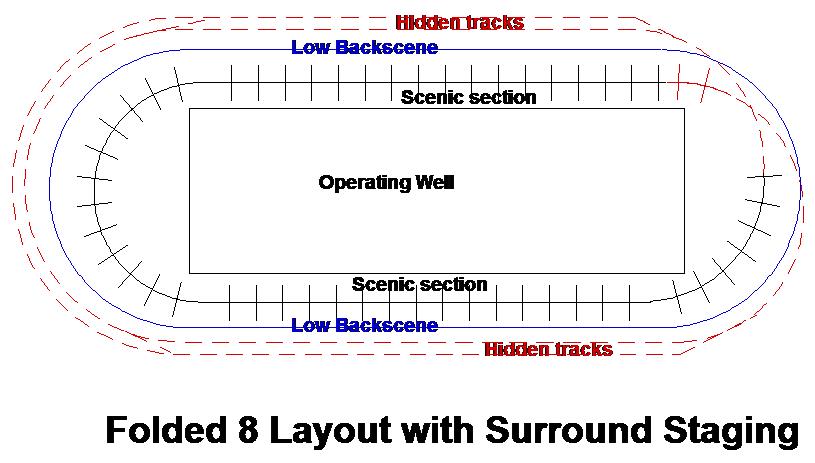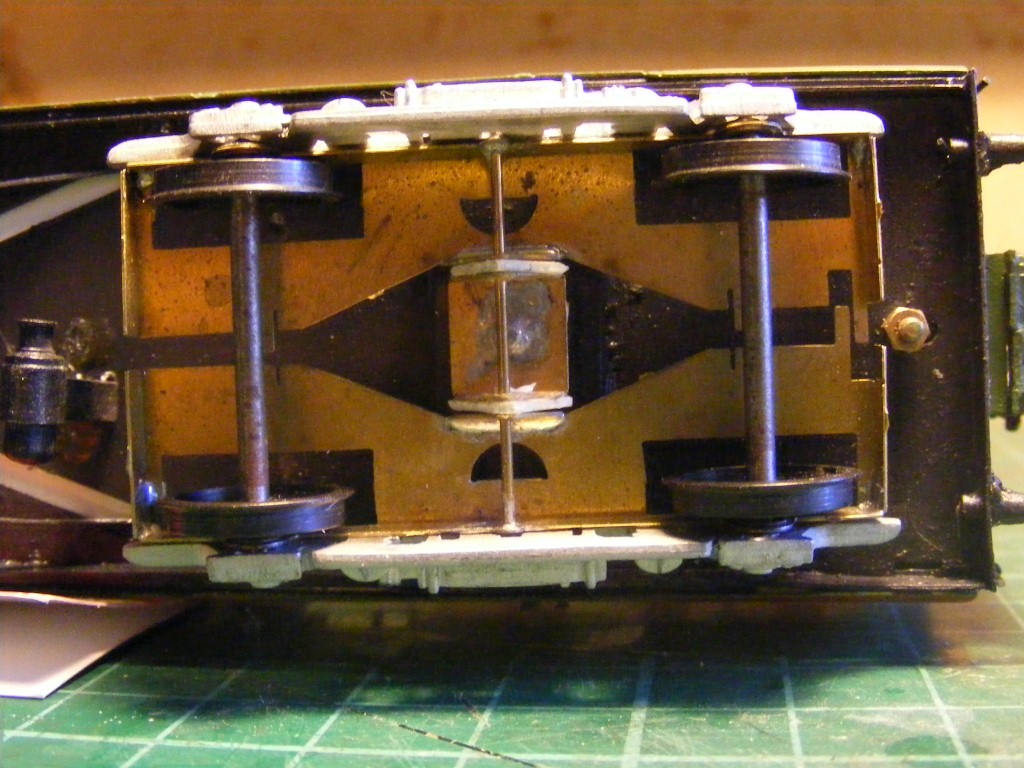-
Posts
4,232 -
Joined
-
Last visited
-
Days Won
98
Content Type
Profiles
Forums
Resource Library
Events
Gallery
Blogs
Store
Community Map
Everything posted by Mayner
-
The main issue is the limited demand for kits the majority of modellers appear to be prepared to pay a premium for a rtr Irish model regardless of quality of the finished article or whether a better model can be built from a kit. The market for kits is a very small sub-sector of the market for Irish models. Etched kits tend to have a lower break-even point than resin or cast metal kits, the market for kits is split roughly 60/40 between Ireland and the UK. The majority of customers in the UK model Irish railways tend to be builders rather than collectors a high proportion work to EM or S4 standards and prefer to select their own running gear, buffers, wheels, couplings. Worsley Works business model producing etched parts only has a much lower break even point than a kit manufacturer and can produce a set of parts for a coach or Loco where there may not be enough demand to produce a kit or rtr model.
-
JHB any idea when goods trains stopped running to Abbeyfeale? The last services to Newcastle West, Ardee, Loughrea and over the Burma Road are all well documented, but nothing on when the Tralee-Abbefeale goods was cut back to Listowel. The daily Limerick-Tralee goods train was replaced by Limerick-Newcastle & Tralee-Abbeyfeale goods trains in the early 70s and the line over Barnagh closed to regular services, but was open for specials and as a diversionary route
-
Do, did operating staff refer to a train by it number or by time-direction and destination? The Weekly Notices and the Appendix to the Working Timetable were a real mine of information, for special and engineers trains, temporary speed limits and other information. One included operating instuctions for loading and unloading Pallet Cement wagons including an isometric drawing
-

The Official Irish 'Might Have Beens' Thread
Mayner replied to minister_for_hardship's topic in General Chat
I don't think anyone at the time on CIE or NIR could see the need for considerably more powerful locomotives. Like the Midland Railway in the early 1900s CIEs plans in the early 70s were based on a fast frequent train service with a small number of uprated 001 Class uprated for Dublin-Tralee trains. This policy unravelled following the 1st oil crisis double heading and more powerful locos required to keep time with less frequent, heavier trains as traffic increased with fewer people emigrating. The Hunslets make sense against the loadings at the time, the locos were similar in H.P.and tractive effort to the rebuilt A Class. The idea of Top & Tail working may have been based on the Edinburgh-Glasgow services of the same era where MK2 coaches topped and tailed by Class 27 locos replaced railcar services. The NIR management did well to convince their political masters of the need for the new train and that rail had a future. The introduction of the Enterprise and re-opening of the Belfast Central Line was a real turning point in the history of the railways in Northern Ireland. -
It looks like the brickworks had a siding at one stage http://maps.osi.ie/publicviewer/#V2,679660,795462,11,9. Loading wagons on the running line may have started after the ending of passenger services in the late 1940s. John O'Meara wrote papers on the Meath Line that were published in the IRRS Journal one in the 1950s and a second more recently. Brick traffic seems to have been carried in standard open wagons, the railway would have gone by the 1970s when bricks were delivered direct from the works to construction sites using trucks with mechanical grabs. Gypsum (in opens and hoppers)seems to have been the only traffic handled when I travelled over the line in an IRRS special in 75 or 76, though it looked like the goods shed had been recently used for bagged cement traffic. Navan (GNR) looked very busy at the time with bagged cement (in H Vans) and Guinness traffic.
-
Skip to the ran sequence around 2:07 The Great Train Robbery was filmed in 77 or 78 with 184 & 186. 184 had a staring role disguised as a English South Eastern Railway 2-2-2 complete with dummy double frames. Most of the movie was filmed around Castletown on the Mullingar-Athlone line, with Moate as Ashford and Heuston temporarily re-named London Bridge. 184 was overhauled in Mullingar for the movie, both locos worked for several years in South Eastern livery and The American loco looks like something that slipped in during editing.
-
Reminds me of the Irish Rovers song which almost made me cry as a kit it was so so sad These days our house is crammed full of Unicorns, Alicorns and Peguases thanks to a little person and My Little Pony
-

The Official Irish 'Might Have Beens' Thread
Mayner replied to minister_for_hardship's topic in General Chat
The Belfast Central scheme was mentioned in E M Patterson's "Ballymena Lines" The BCR obtained an Act to build a 3' gauge line to Ardoyne, a separate company the Ballyclare, Ligoneil and Belfast Junction obtained an Act to extend the line from Ardoyne to Doagh possibly linking up with the Ballymena & Larne narrow gauge. Not to be outdone the Londonderry and Larne Railway had plans for a line from Ballymena through Portglenone across the Sperrin Mountains through Dungiven and Claudy to Derry City. This could have opened up the prospect of Fish Trains from Burtonport to Larne -
The Crossley engine in the WAGR locos were supposed to have been an earlier version to that fitted to the A Class and Co Bos . Interestingly the Australians de-rated the engines which seem to have solved most of the problems and the relatively long life of the locos. http://www.railpage.com.au/locos/x-class-diesel-wa Apart from the Metrovicks Western Australia seem to buy locos in small batches from different manufacturers including Alco, English Electric & GM. Not sure why they went for the 2-Do-2 wheel arrangement, possibly difficulty fitting the traction motors between the wheels on the narrow gauge, as far away as possible from dust on Outback lines or possibly track better on very light rails on branch lines. All later classes were conventional Australian double bogie designs
-

Ulster Folk & Transport Museum 2015.
Mayner replied to popeye's topic in Photos & Videos of the Prototype
I like the photo of Drew Donaldson's locos with an 800 Class lurking inside the shed while the MGWR 2-4-0 with flyaway cab tries to look inconspicuous between the ex-WLWR & GSWR 4-4-0s. There is a story that museum staff thought Blanche's boiler and dome were black when the loco 1st arrived but found red paint under the soot and muck. In most colour photos from the 50s the red cladding can be seen grinning through the muck though the domes seem to have an almost satin back finish just like the preserved loco! -
For an idea of what the CIE A Class originally sounded like a series of videos of Western Australian Metrovicks on suburban passenger duties a late as 1986. [video=youtube;c3L-XaV66Ds] Perhaps maintenance was better, but the most striking thing is the lack of the smoke screen seen in photos and videos of the Irish Metrovicks. The State Government would have been reluctant to invest in re-building or replacing the Metrovicks as lines were closed or converted to standard gauge
-
The upper section of the Ratio 500 & 503 may be based on a standard Railway Signal Company rather than a GWR design and is close in general appearance to cabins used by the GSWR, MGWR & WLWR. Gort, Killucan, Mallow South and Roscrea come to mind. http://www.ehattons.com/40599/Ratio_500_GWR_Signal_Box/StockDetail.aspx It might even be possible to combine several kits to model larger cabins such as Athlone West or Galway http://www.signalbox.org/overseas/ireland/athlonewestjcn.htm The Irish boxes tended to have brick bases with relatively small windows in the locking room. Lamp oil would usually be stored in a separate lamp room http://www.ehattons.com/40386/Wills_Kits_SS22_Lamp_huts_with_2_oil_drums/StockDetail.aspx. The railway company did not want a stray fag end or ember from the fire causing an explosion in the locking room.
-
Well done the rivet detail and plasticard overlays really capture the angular look of these locomotives.
-
The detailing always seems to be the slowest part of any modelling project. Great step by step on what's involved in scratch building a loco.
-
You might of hit the jackpot Minister the horizontal tie-bar through the framing seems to be a common feature on CBSCR covered goods wagons. I have seen grounded bodies of GSWR, GNR & GSR vans with aluminium sheeting sandwiched between the framing and planking. This may have been an economy measure to use a lower grade of timber for body planking.
-
Rich You have really captured the atmosphere of the station buildings. I spent a very enjoyable day about 20 years ago taking photos of the buildings at Kingscourt and Athboy. Kingscourt could make a very attractive model as a terminus or as a through station, there were even plans at one stage to extend the line to Carrickmacross and Armagh. I have drawn a sketch of the track layout before it was rationalised in the 80s. Gypsum was unloaded directly from tipper trucks into railway wagons from a raised concrete ramp and turntable arrangement, wagons seem to have been positioned by a winch arrangement rather than loco. The gypsum loading ramp and turntable seems to have been on the site of the cattle bank or possibly cattle shed road, which was slewed over and the loco shed demolished There are some nice photos of this end of the station in GSR days complete with ex MGWR Standard Goods & 6 wheel coaches in Donal Murrays "Great Southern Railways" pictorial Iain Allen 2006 The slip points on the crossover to the goods yard is almost a MGWR trademark Edenderry & Athboy had a similar arrangement, the slips may have been replaced by turnouts in CIE days. Although the loco shed was demolished the turnout from the loop to the loco yard is probably still in place. The loading of wagons on the running line at the brickworks loading bank was the biggest oddity at Kingscourt. Brick traffic was important into CIE days and the crane on the loading bank was locked by the Kingscourt-Nobber later Wilkinstown section staff. Passenger trains ran to and from Broadstone and later Amiens St with a 650 Class or a Midland Standard Goods and a few 6 wheelers. Services were fairly sparse usually morning and evening and the occasional mid day train. The Kingscourt goods was scheduled for steam operation into the late 1950s with large Midland (j5) or GSWR (J4 or possibly J9) working the 3 trice weekly goods. Traffic from Kingscourt was diverted to run over the GNR line and Clonsilla-Junction Navan closed to regular traffic apart from cattle specials from LIffey Junction to Drumree & Kilmessan before complete closure in 1963
-
Fair play to Pat, Stephen, Fran and Richie for their initiative and being prepared to take the risk with commissioning a rtr wagon. The ballast hopper is an excellent choice and hopefully generate the critical mass in terms of sales to finance the development of the cement bubble. A bit modern for my taste but very difficult to resist.
-
[/size] The Redplant100 Hopper Wagons seem to be the same the Model Irish Scale Rail (MISR) p.w. hoppers produced by James McKay Photos © James McKay MISR The MISR CIE H van and Bullied corrugated open had a very good review in May 2013 New Irish Lines. There seems to have been plans to introduce a wide range of wagons including hoppers, tankers before MISR disappeared off the radar. It may be worth while contacting James McKay 2 Coneyburrow, Dublin Road, Edenderry or misr@eircom.net to check if he is still producing wagons.
-
The BNM systems in North Mayo were built to serve Bellacorrick power station on the Oweninny system rather than local needs. Bangor Erris is a feeder system with road transfer to Bellacorick. A broad gauge line might have survived long enough to bring in the construction material for the power station and link to the National Grid. It would have made sense to convert Bangor Erris -Bellacorrick to narrow gauge and abandon the broad gauge line. Most people in areas where peat is plentiful including most of the Central Plain and Mountainous areas had access to and harvested their own peat. Attempts to control an individuals right to cut turf for their own personal use in the name of conservation while Bord na Mona stip mines the commercial bogs is a major issue in many areas
-
I suppose it depends on whether you prefer the post or pre 1970s block train era with individual wagon loads distributed by rail loose coupled goods trains often to most villages and towns or the block train era. The Texaco siding at the tank farms in Tivoli seems to have been busy with oil traffic in the 70s with heavy fuel oil for Ballinacourty and Burmah oil traffic (petrol & diesel) for Limerick, and presumably Texaco traffic. The siding was the terminal for the oil and magnesite trains and had a connection into the Quigley Magnesite Roofchrome factory, which eventually became the siding to the Tivoli container terminal.
-
Up to the block train era fertiliser and possibly agricultural lime would have been sent in individual wagon loads in sheeted opens. There was probably more competition in the market before NET Shelton Abbey came on line in the 60s. Beside Gouldings North Wall, NET and Albatros, there were also rail linked feriliser factories at Foynes and Wicklow quay operating in the 1960s. Oil and petrol would have also been transported in individual wagon loads into the 70s with stations in medium sized towns having oil depot since the 1930s. The Irish Shell and ESSO tank wagons seem to have been mainly the older Pre-WW2 cradle mounted tanks though Caltex had a fleet of more modern anchor mounted tanks similar to the new Bachmann wagon http://www.bachmann.co.uk/image_box.php?image=images1/branchline/38-776.jpg&cat_no=38-776&info=0&width=650&height=461 I am not sure about Cork, Foynes and Dublin Ports seem to have been the main originating points before the opening of the Whitegate Refinery. Foynes nearly closed in the early 60s with the loss of oil and fertiliser traffic before the revival with the starting of heavy fuel oil traffic to the Cement factories and Silvermines ore traffic. One scenario could be a rail or pipeline from Whitegate to the Youghal/Waterford line and supply most of the countrys petrol and diesel by rail rather than road or coastal shipping. The transportation of tar by rail tanker seems to have been pretty much a 50-60s thing before that tar and bitumen seems to have been mainly delivered in open wagons in 45gal drums, another interesting load for an open wagon
-
Carriage Sheds with corrugated iron roofs seem to have been common enough up to the 1930s when the GSR removed them to reduce the rates bill. The Ratio kit might be a good starting point http://www.rmweb.co.uk/community/index.php?/blog/574/entry-8333-a-carriage-shed-at-last/. The GSWR & GNR tended to build terminus stations with overall roofs that could be used as carriage sheds, the MGWR and smaller corrugated companies tended to provide separate carriage sheds. There were a few exceptions at one stage Cahirciveen on the GSWR which was operated more as a terminus than a through station had a corrugated iron carriage shed and no overall roof, both Tramore & Waterford Manor on the W&T had overall roofs.
-
One idea if you have a continuous run or oval is to use what American modellers "Surround Staging and hide he storage track behind a low backscene. The hidden track could be single or double track either a simple loop off the running line on a simple oval or part of a folded 8 arrangement. This sort of arrangement can work well behind the scenic part of a layout in an attic as you only need enough room for a double or single line of track. I had this sort of arrangement on an N gauge layout in Dublin, I kept the scenic boards to a maximum of 300mm with removable buildings in order to reach point motors on the hidden section. Track cleaning was taken care of by a "CMR Clean Machine" running round the main line and hidden storage once a month.
-
Excellent stuff, I am thinking strongly of getting a GW Models press. What's your preferred method for cutting out the footplate and side tanks?
-
The wheel puller is available along with a range of really useful tools from G W Models who advertise in Model Railway Journal. The back to back gauge (big metal thingy) was supplied by Terry McDermott of TMD the Genesis of the current range of SSM kits. The conversion of the loco took approximately 1 hour. Dapol/Airfix tank wagon conversion The solebars (side frames) are packed out with 1mm plasticard otherwise the 21mm wheelsets would not fit. Wheels are Ultrascale on 28mm pin point axles. Commonwealth Coach bogie with MJT torsion bar suspension unit with 1mm plastciard packers Economy 21mm coach bogie conversion Old Hornby Stanier bogie with plasticard bolster and standard OO wheelset, std 26mm axle cut in two and pushed out to 28mm 2mm brass sleeve. The "economy" conversion was remarkably effective and trouble free in operation at exhibitions, along with a pair of old style Hornby Staniers I also had a MK3 Push Pull set converted from Lima MK3s with plasticard bolsters
.png.c363cdf5c3fb7955cd92a55eb6dbbae0.png)








